Ominesan in japan
Ominesan
Hiking time: 5 hours
• Estimated hiking distance: 5 miles
• Elevation gain: 2590 feet
• Topo Map: 1:50,000 Topographical Hiking Map, #56 or Geospatial Authority
of Japan Online Map
• Difficulties: Some Class 4 scrambling
• Permit: None required
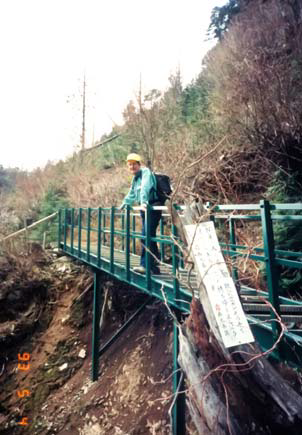
Characteristics
Mountains have always figured large in the religious and social landscape of
Japan. Perhaps this is so because in such a densely populated yet mountainous
country where the flatland had all been developed for agriculture, the only
wilderness left in which to seek privacy for meditation and prayer was in the
mountains. Moreover, it was evident that the mountains brought the rain that
was so important to the crops, particularly the rice. So in the ancient shamanistic
belief system known as Shinto the mountains were believed to be the home
of the spirits and the place where dead souls went to rest.
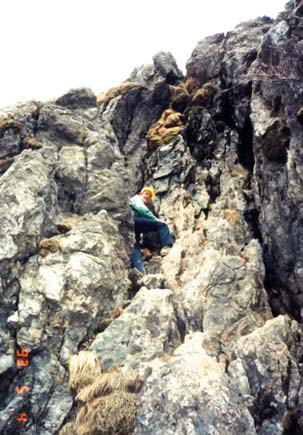
Some mountains are favorite and most sacred mountains. Adherents of those sects are often required
to climb their holy mountains once or twice a year and to perform religious
ceremonies during those pilgrimages. These pilgrims signify their devotion by
wearing particular clothing and carrying particular objects; they are sometimes
referred to as “yamabushi”.
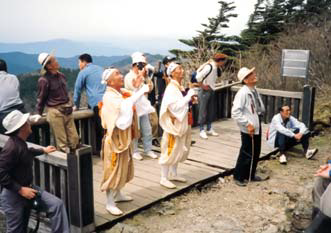
The mountains of the Kii peninsula south of Osaka and Kyoto were a natural
refuge from the crowded cities to the north and, after the introduction of
Buddhism in the sixth century, the principal peaks, and particularly the mysterious
peak known as Ominesan or Sanjo-go-take, became invested with much
Buddhist symbolism. The most renowned of Japan’s mountain ascetics, En
no Ozunu, is said to have climbed Ominesan about 1300 years ago. Later the
mountain became the center of the Shugendo sect and was associated with paradise.
Even today every member of the sect is expected to go on a pilgrimage
to Ominesan once a year. Moreover a strict set of rules were expected to be
observed during the pilgrimage, rules that were enforced by local residents including
the inhabitants of the local village of Dorogawa at the bottom of one
of the pilgrimage trails. Among the rules were the prohibition of food except
for that found growing naturally along the way. Moreover, women were not
permitted beyond a certain point on the mountain. Those not observing the
rules risked being thrown to their deaths from trailside cliffs.
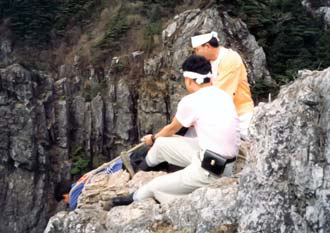
In the early months of 1993, I embarked on an extended academic trip to
Japan. One of my longer sojourns was in Osaka with my friend Yoshi Tsujimoto
and, one weekend, he decided to take me hiking in the mountains south
of Osaka. Our goal was the summit of Sanjo-go-take in the Ominesan region
of the Kii peninsula. Early one morning we drove through Wakayama and
wound our way over narrow mountain roads to the village of Dorogawa. Driving
through Dorogawa on highway 21, we parked at the trailhead at 34o16.013’N
135o54.830’E and an elevation of 3050ft. From there we began our hike to the
summit of Ominesan, called Sanjo-go-take. White clad yamabushi were frequently
seen starting their pilgrimage up the mountain, festooned with various
paraphernalia and making stops for devotions at small “shrines” along the way.
The standard outfit was comprised of white and yellow baggy clothes with white leggings and slippers.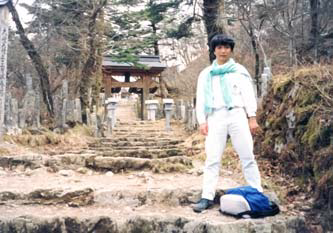
believed to be more sacred than others. Individual religious sects have their own
